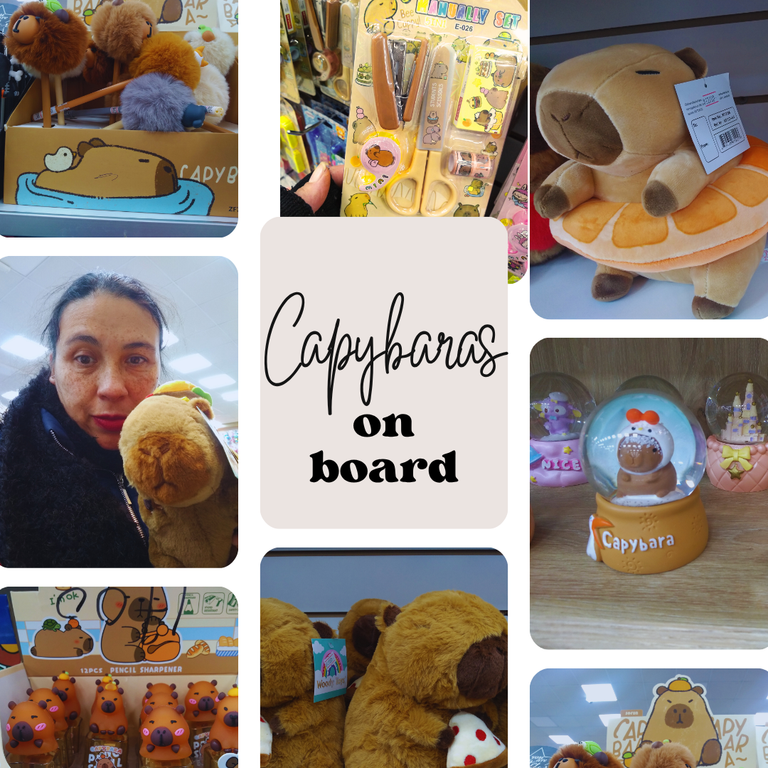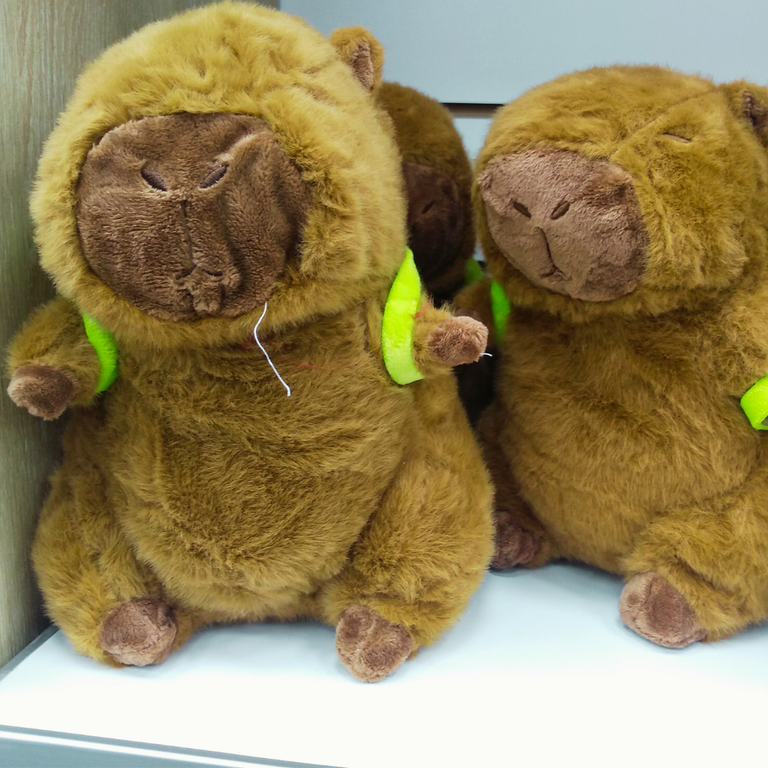La fiebre de los capybaras / Capybaras fever
Quizás hace un par de años, la mayoría de las personas de la ciudad desconocían de la existencia de este particular roedor suramericano de gran tamaño.

En Venezuela, su hábitat natural son los llanos, sobre todo en las zonas cercanas a los ríos, donde pueden verse las familias de Chigüires que acá en Argentina son llamados Capybaras y en otras regiones los conocen como Carpinchos.

Y es que ahora, se ha desatado una fiebre entre los niños y jóvenes, producto de usar la figura de estos animalitos, para la realización de todo tipo de merch, que ha inundado el mercado, generando un consumo desmesurado de todo aquello que represente un capybara.

Si bien, hacer del conocimiento general sobre la existencia de los capybaras, usando esta estrategia, puede ser algo positivo, el que se vean como elementos de consumo masivo, quizás juegue en contra en algún momento, pues también se pueden asociar a los animales reales con el hecho de ser mascotas, y querer adquirirlos en los mercados ilegales.

Aunque he visto muchos objetos relacionados con este gran roedor en la escuela de mi hijo pequeño, me impresioné cuando al entrar en una tienda tenían una sección completa de artículos con la figura de los ahora famosos capybaras.

Los hay decorativos y también funcionales, y la verdad es que se ven tan adorables que hasta me provocaba comprarme alguno de ellos, pero mi mentalidad de adulto responsable y ejemplo para mis hijos me llevó solo a fotografiarlos, si adquirir nada. De llegar a casa con algo así, estaría contradiciendo lo que siempre les digo antes de hacer un gasto: lo queremos o lo necesitamos.

Durante mi infancia, la moda fue tener pollitos de colores, que realmente eran pintados con fines comerciales, pero a diferencia de la actualidad, no se hacía merch, sino que vendían a estos animalitos, que terminaban siendo abandonados por los niños, llegando muy pocos a crecer como gallinas o gallos, y los que lograron a su etapa adulta, pasaron a ser el ingrediente del caldo del fin de semana, generando en más de un niño, un trauma con respecto a ello.
Solo espero que así como pasó la temporada de los patitos amarillos, esta también termine sin perjudicar a estos adorables animalitos en su hábitat natural.

Perhaps a couple of years ago, most people in the city were unaware of the existence of this particular large South American rodent.
In Venezuela, its natural habitat is the plains, especially in areas near rivers, where families of Chigüires can be seen, which here in Argentina are called Capybaras and in other regions they are known as Carpinchos.

And now, it has unleashed a fever among children and young people, product of using the figure of these animals, for the realization of all kinds of merch, which has flooded the market, generating an excessive consumption of everything that represents a capybara.

While making general knowledge about the existence of capybaras, using this strategy, can be a positive thing, the fact that they are seen as elements of mass consumption, perhaps play against at some point, because they can also associate real animals with the fact of being pets, and want to acquire them in illegal markets.

Although I have seen many items related to this large rodent at my young son's school, I was impressed when I walked into a store and they had an entire section of items with the figure of the now famous capybaras.

There are decorative and also functional, and the truth is that they look so adorable that even provoked me to buy one of them, but my mentality of responsible adult and example for my children led me only to photograph them, without acquiring anything. If I came home with something like this, I would be contradicting what I always tell them before making an expense: we want it or we need it.

During my childhood, the fashion was to have colorful chicks, which were really painted for commercial purposes, but unlike today, it was not made merch, but sold to these animals, which ended up being abandoned by children, reaching very few to grow up as chickens or roosters, and those who managed to their adult stage, became the ingredient of the weekend broth, generating in more than one child, a trauma regarding it.
I only hope that just as the season of the yellow ducklings passed, this one will also end without harming these adorable little animals in their natural habitat.
Foto/Photo by: @mamaemigrante
Edición/Edited by @mamaemigrante using canva
Translated and formatted with Deepl
Que bonitos a mi me gustan mucho
Te diré que se ven super tiernos, a mí hija le gustan pero no como para que quiera algo relacionado con ellos, quizás alguna franela, o sudadera, de resto no me ha comentado mas nada. Pero por un lado tienes razón es un animalito que muchos no conocían, ojalá y este boom comercial no provoque intentos locos por querer los reales. Pero bueno, entre la necesidad o el querer está enseñarlos, y es lo que hacemos.
🎉🎉🥳 Congratulations 🥳🎊🎊
Your post has just been curated and upvoted by Ecency
keep up the good work
aliexpress is full of that kind of stuff , as long as we keep consuming they keep producing
Join us on the Ecency Discord
Chigüires hasta que Televen transmite Pantanal, la novela brasileña.
Capybaras y carpinchos que vienen a ocupar el lugar del ratón Disney o el osito Tedy ¿Porqué será, que intención hay detrás, algo relacionado con la Amazonía?